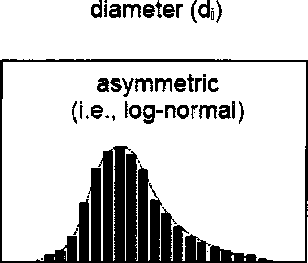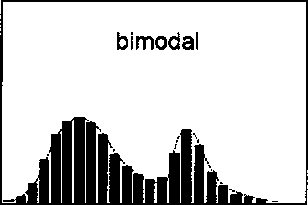Chapter 2
may be described by Otherdistributions1 as shown in Figure 2.1 [2]. In these cases,
the mean drop size is the most commonly used to characterize an emulsion tθ1.
|
mo ________1 |
nodisperse I________________ |
symmetric
(i.e., normal)


Figure 2.1 Different drop size distributions [2]

Several experimental methods have been used to determine drop sizes in
emulsions, including microscopy, photomicrography, video microscopy, light
scattering, sedimentation, coulter counting, turbidimetry, nuclear magnetic
resonance (NMR) and acoustics among others [7].
2.2.2. Emulsion morphology
The morphology is the most basic characteristic of an emulsion.
Morphologies of different type of emulsions are shown in Figure2.2 [2].
More intriguing information
1. Rural-Urban Economic Disparities among China’s Elderly2. The Determinants of Individual Trade Policy Preferences: International Survey Evidence
3. The name is absent
4. Consumer Networks and Firm Reputation: A First Experimental Investigation
5. The name is absent
6. Alzheimer’s Disease and Herpes Simplex Encephalitis
7. Correlates of Alcoholic Blackout Experience
8. An Efficient Secure Multimodal Biometric Fusion Using Palmprint and Face Image
9. The name is absent
10. Konjunkturprognostiker unter Panik: Kommentar